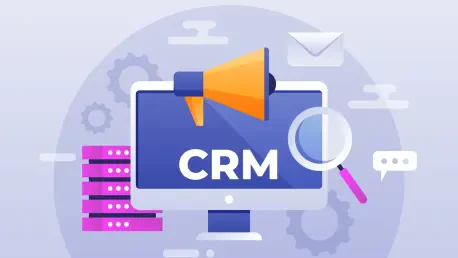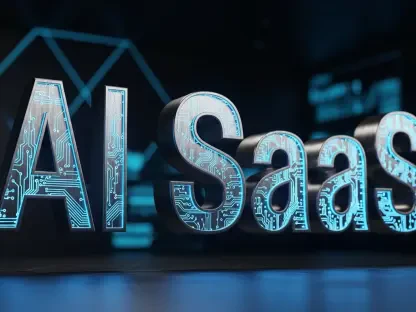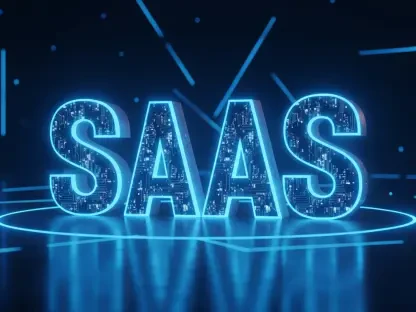Imagine a plumbing business swamped with emergency calls at midnight, struggling to dispatch technicians while manually tracking customer requests on paper or outdated spreadsheets, a chaotic scenario all too common in the industry. This situation highlights the urgent need for streamlined operations in a sector where response time can make or break customer trust. Customer Relationship Management (CRM) software tailored for plumbing businesses has emerged as a vital solution, transforming how companies manage scheduling, client interactions, and invoicing. This review dives into the cutting-edge innovations of plumbing CRMs, exploring their features, real-world impact, and potential to redefine efficiency and customer satisfaction in the field.
Understanding Plumbing CRMs: A Game-Changer for the Industry
Plumbing-specific CRMs have become indispensable tools, designed to address the unique demands of an industry where urgent repairs and client communication are paramount. These platforms consolidate critical functions like job scheduling, technician dispatching, customer data management, and billing into a single, unified system. By automating repetitive tasks, such CRMs allow businesses to prioritize service delivery over administrative burdens, ensuring that no call goes unanswered and no job slips through the cracks.
The shift from traditional, manual processes to digital solutions marks a significant modernization effort in an industry long reliant on pen-and-paper methods. For many plumbing firms, adopting a CRM means staying competitive in a market where customers expect rapid responses and seamless interactions. Enhanced operational efficiency, driven by these tools, not only reduces errors but also builds a foundation for scalability, enabling small contractors to rival larger enterprises in service quality.
Key Features of Leading Plumbing CRMs
AI-Driven Automation and Analytics
Artificial Intelligence (AI) stands at the forefront of plumbing CRM innovation, offering features that revolutionize daily operations. Platforms like ServiceTitan leverage AI to power virtual receptionists that handle after-hours calls, ensuring no customer inquiry is missed. Predictive analytics, as seen in tools like Pipedrive, enable businesses to anticipate service demands by analyzing historical data, allowing for proactive resource allocation and inventory management.
The impact of AI extends beyond convenience to tangible cost savings. By automating routine tasks and optimizing technician routes, these systems minimize downtime and fuel expenses, directly boosting profitability. Such advancements ensure that plumbing companies can respond to emergencies faster, enhancing their reputation for reliability in a highly competitive landscape.
Mobile Accessibility and Integration
Mobile-friendly interfaces have become a cornerstone of effective plumbing CRMs, empowering technicians to access job details, update statuses, and process payments directly from the field. Solutions like Housecall Pro and Jobber exemplify this trend, offering intuitive apps that sync seamlessly with desktop systems. This accessibility ensures that real-time updates reach all team members instantly, reducing communication delays during critical service windows.
Integration with external tools further amplifies the value of these CRMs. Compatibility with accounting software like QuickBooks allows for streamlined financial tracking, eliminating the need for manual data entry. By freeing technicians from desk-bound tasks, such integrations enable a sharper focus on customer-facing work, ultimately improving service delivery and client satisfaction across the board.
Latest Trends in Plumbing CRM Technology
The integration of the Internet of Things (IoT) represents a groundbreaking trend in plumbing CRMs, facilitating proactive maintenance through connected devices. Sensors embedded in plumbing systems can relay real-time data to CRM platforms, alerting businesses to potential issues before they escalate into costly repairs. This capability not only prevents service disruptions but also positions companies as forward-thinking partners in property management.
Another notable development is the adoption of modern communication channels to enhance customer engagement. Tools incorporating platforms like WhatsApp allow for instant updates and confirmations, meeting clients where they are most active. Additionally, the industry is witnessing a shift toward scalable, vendor-neutral solutions such as open-source CRMs, offering customizable options that cater to diverse business needs without locking users into proprietary ecosystems.
Emerging behaviors among plumbing firms point to a growing preference for flexibility in technology adoption. Customizable platforms enable tailoring to specific workflows, ensuring that businesses of all sizes can leverage CRM benefits without overextending budgets. This trend underscores a broader movement toward adaptability, positioning tech-savvy companies to thrive amid evolving market demands.
Real-World Applications and Impact on Plumbing Businesses
Across small, medium, and large plumbing firms, CRMs have proven their worth by streamlining operations and enhancing customer loyalty. For instance, Commusoft excels in optimizing scheduling for smaller contractors, ensuring efficient job allocation with minimal overlap. Larger enterprises often turn to HubSpot for its marketing automation features, which nurture leads and maintain client relationships through targeted campaigns.
Unique applications of CRM technology further illustrate their transformative potential. AI-driven emergency call management ensures rapid response during critical situations, while IoT data integration supports predictive repairs, reducing unexpected breakdowns. These innovations translate into measurable benefits, such as shorter wait times for customers and reduced operational bottlenecks for businesses.
The ripple effect of CRM adoption is evident in improved client retention rates. By providing consistent communication and reliable service tracking, plumbing companies foster trust and repeat business. This operational streamlining not only boosts profitability but also establishes a competitive edge, particularly for firms that embrace these tools early in their growth trajectory.
Challenges and Limitations in CRM Adoption
Despite the clear advantages, adopting a CRM system is not without hurdles, especially for smaller plumbing contractors. Data migration poses a significant challenge, as transferring existing records to a new platform can be time-consuming and prone to errors. Additionally, the cost of premium solutions like Salesforce may deter budget-conscious firms, prompting comparisons with more affordable options like Zoho CRM.
Staff training represents another barrier, as employees accustomed to manual methods may resist or struggle with digital tools. User feedback often highlights the need for intuitive interfaces to ease this transition and minimize downtime during implementation. Industry recommendations suggest prioritizing platforms with robust onboarding support to address these learning curves effectively.
Efforts to enhance user-friendliness are underway, with developers focusing on simplifying dashboards and automating setup processes. While these challenges persist, the long-term gains of CRM adoption—such as improved workflow efficiency—often outweigh initial setbacks. Addressing cost concerns through tiered pricing models also helps make these tools accessible to a wider range of plumbing businesses.
Future Outlook for Plumbing CRMs
Looking ahead, the trajectory of plumbing CRM technology points to deeper IoT integration, enabling real-time diagnostics that could transform service delivery. Imagine systems that not only detect leaks but also dispatch technicians with precise repair instructions before a customer even notices an issue. Such advancements promise to elevate preventative maintenance to new heights over the coming years.
AI chatbots are also poised to redefine customer service within the plumbing sector. Capable of handling routine inquiries and booking appointments, these tools free up human resources for complex problem-solving. As adoption of these innovations accelerates, early adopters could secure a significant market advantage by streamlining operations and enhancing client interactions.
The long-term impact of these developments will likely reshape industry standards, favoring businesses that invest in cutting-edge solutions. From 2025 onward, expect a widening gap between tech-forward firms and those slower to adapt, as integrated CRMs become a benchmark for operational excellence. This evolution signals a future where technology and service quality are inextricably linked.
Final Thoughts on Plumbing CRM Innovations
Reflecting on the comprehensive exploration of plumbing CRMs, it becomes clear that these tools have already reshaped the industry by enhancing efficiency, customer satisfaction, and profitability for businesses of all sizes. Their ability to automate mundane tasks and provide actionable insights through AI and IoT has proven invaluable in a sector defined by urgency and precision. Despite challenges like data migration and training, the strengths of these platforms have consistently outweighed the drawbacks during implementation phases.
Moving forward, plumbing companies should prioritize evaluating CRM options that align with their specific operational needs and budget constraints, focusing on scalability and ease of integration. Exploring free-tier or open-source solutions could serve as a low-risk entry point for smaller firms hesitant to commit to premium tools. Additionally, investing in staff training programs would ensure smoother transitions, maximizing the return on technology investments.
As the industry continues to evolve, staying abreast of emerging trends like advanced IoT diagnostics and AI-driven customer service will be crucial for maintaining a competitive edge. Businesses that strategically adopt and adapt to these innovations stand to redefine service standards, setting a new bar for responsiveness and reliability in the plumbing sector. This journey toward technological integration offers a clear path to sustained growth and client trust.









